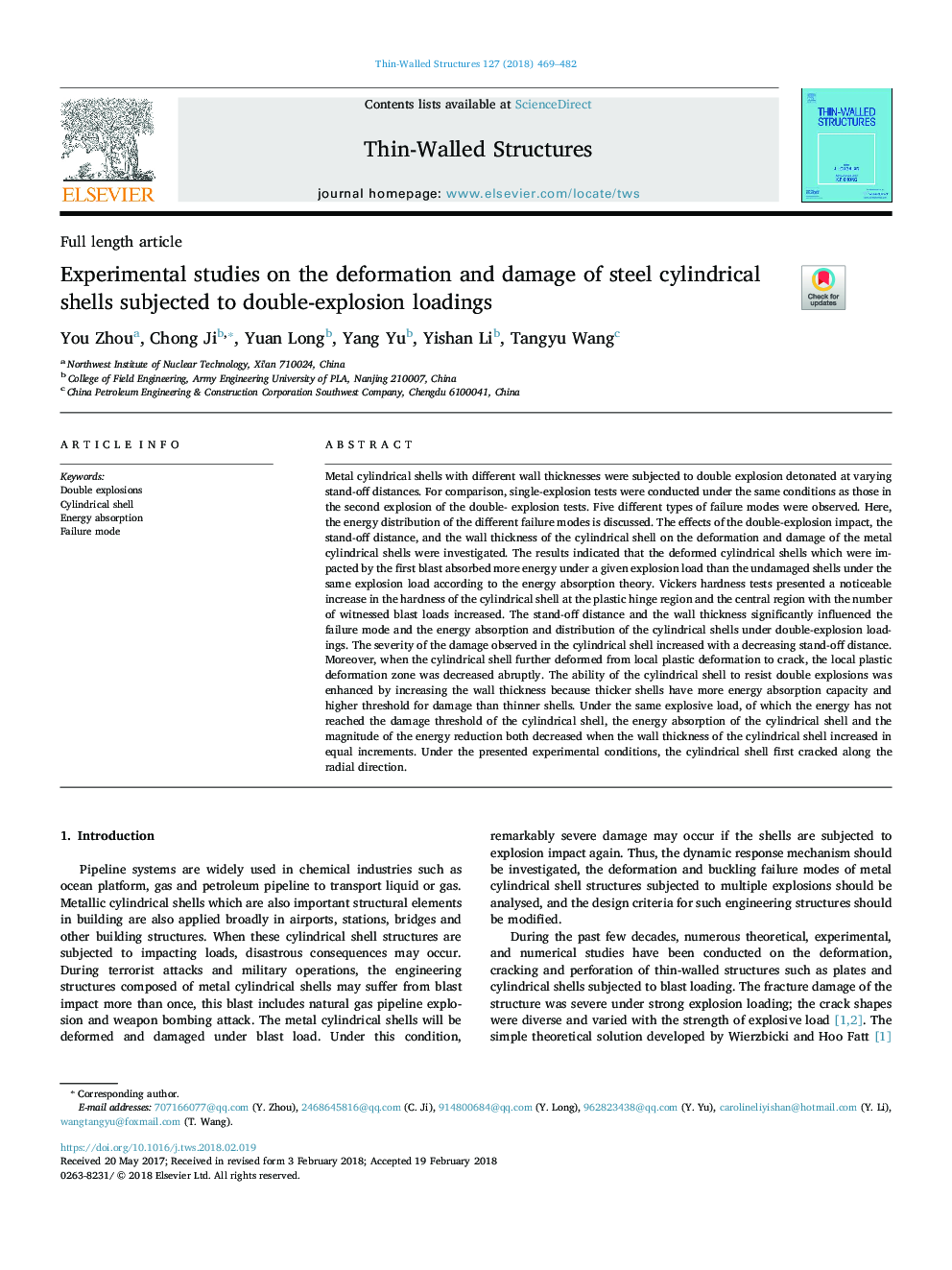| Article ID | Journal | Published Year | Pages | File Type |
|---|---|---|---|---|
| 6777720 | Thin-Walled Structures | 2018 | 14 Pages |
Abstract
Metal cylindrical shells with different wall thicknesses were subjected to double explosion detonated at varying stand-off distances. For comparison, single-explosion tests were conducted under the same conditions as those in the second explosion of the double- explosion tests. Five different types of failure modes were observed. Here, the energy distribution of the different failure modes is discussed. The effects of the double-explosion impact, the stand-off distance, and the wall thickness of the cylindrical shell on the deformation and damage of the metal cylindrical shells were investigated. The results indicated that the deformed cylindrical shells which were impacted by the first blast absorbed more energy under a given explosion load than the undamaged shells under the same explosion load according to the energy absorption theory. Vickers hardness tests presented a noticeable increase in the hardness of the cylindrical shell at the plastic hinge region and the central region with the number of witnessed blast loads increased. The stand-off distance and the wall thickness significantly influenced the failure mode and the energy absorption and distribution of the cylindrical shells under double-explosion loadings. The severity of the damage observed in the cylindrical shell increased with a decreasing stand-off distance. Moreover, when the cylindrical shell further deformed from local plastic deformation to crack, the local plastic deformation zone was decreased abruptly. The ability of the cylindrical shell to resist double explosions was enhanced by increasing the wall thickness because thicker shells have more energy absorption capacity and higher threshold for damage than thinner shells. Under the same explosive load, of which the energy has not reached the damage threshold of the cylindrical shell, the energy absorption of the cylindrical shell and the magnitude of the energy reduction both decreased when the wall thickness of the cylindrical shell increased in equal increments. Under the presented experimental conditions, the cylindrical shell first cracked along the radial direction.
Related Topics
Physical Sciences and Engineering
Engineering
Civil and Structural Engineering
Authors
You Zhou, Chong Ji, Yuan Long, Yang Yu, Yishan Li, Tangyu Wang,
